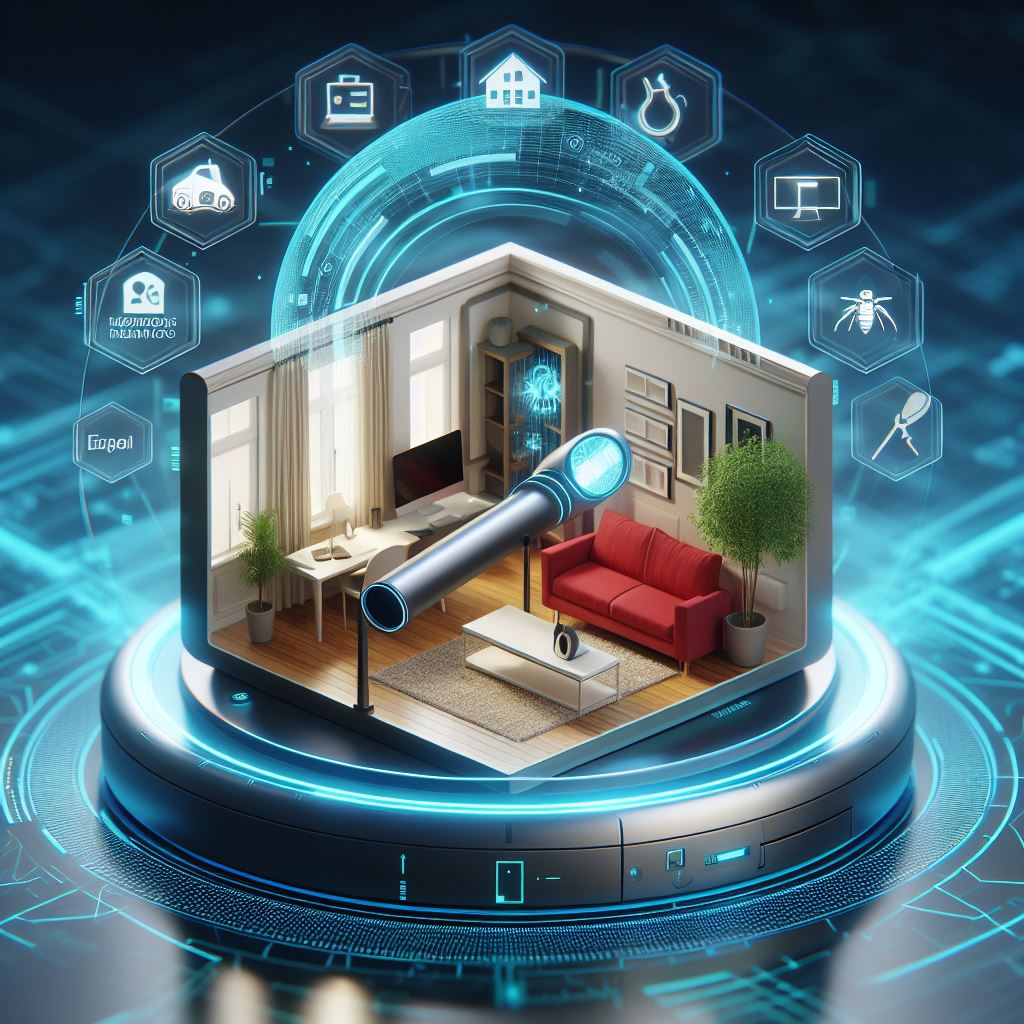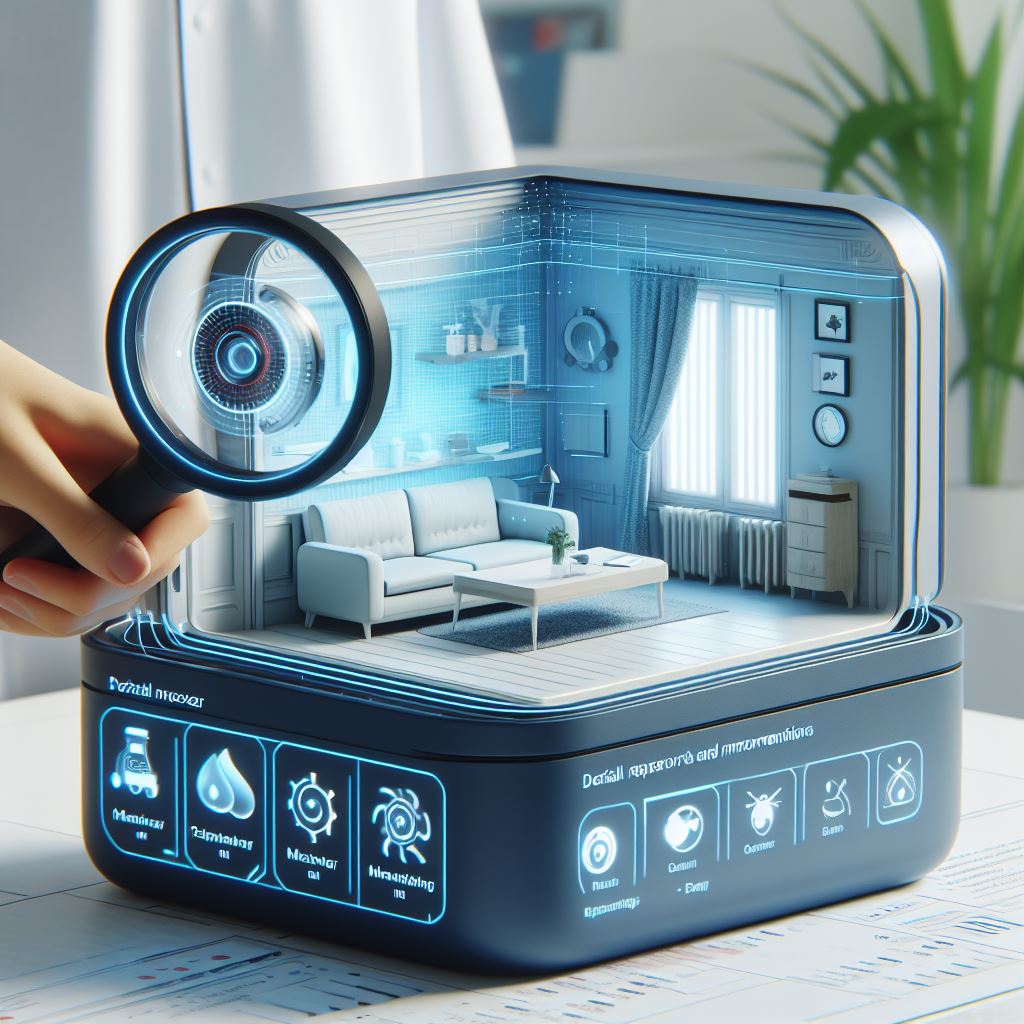Home inspectors rely on a variety of tools to perform thorough inspections of residential properties. One essential tool is a flashlight, which allows inspectors to examine dark and hard-to-reach areas. Moisture meters are also commonly used to detect any hidden water damage, which can lead to mold or structural issues. A thermal imaging camera is another valuable tool that helps identify heat loss, insulation problems, or electrical issues. In addition, a digital camera is used to document any visible defects or areas of concern. Other tools that home inspectors may utilize include a ladder for accessing roofs or crawl spaces, a voltage tester to check electrical systems, and a gas leak detector for inspecting gas lines. With these tools at their disposal, home inspectors are able to provide comprehensive and accurate assessments of a property’s condition.
The Benefits of Using Drones for Home Inspections
In recent years, the use of drones has become increasingly popular in various industries, and the field of home inspections is no exception. Drones, also known as unmanned aerial vehicles (UAVs), have revolutionized the way home inspectors conduct their work. This article will explore the benefits of using drones for home inspections and how they have transformed the industry.
One of the primary advantages of using drones for home inspections is the ability to access hard-to-reach areas. Traditional methods of inspecting roofs, chimneys, and other elevated structures often require inspectors to climb ladders or use scaffolding, which can be time-consuming and potentially dangerous. With drones, inspectors can easily navigate these areas without putting themselves at risk. By capturing high-resolution images and videos, drones provide a comprehensive view of the property, allowing inspectors to identify potential issues that may have otherwise gone unnoticed.
Furthermore, drones offer a cost-effective solution for home inspections. In the past, hiring specialized equipment or personnel to access difficult areas could be expensive. Drones eliminate the need for additional resources, making inspections more affordable for homeowners. Additionally, drones can cover large areas in a relatively short amount of time, increasing efficiency and reducing labor costs. This cost-effectiveness has made drones an attractive option for both home inspectors and their clients.
Another significant benefit of using drones is the ability to capture detailed and accurate data. Equipped with high-resolution cameras and sensors, drones can capture images and videos from various angles, providing a comprehensive visual representation of the property. This data can be used to create detailed reports, which are essential for both homebuyers and sellers. By having access to accurate and reliable information, clients can make informed decisions about the property, ensuring a smooth and transparent transaction process.
Moreover, drones enable inspectors to detect potential issues that may not be visible to the naked eye. Thermal imaging cameras, for example, can identify heat signatures, which can indicate insulation problems or electrical issues. By using this technology, inspectors can identify potential hazards and recommend necessary repairs or improvements. This level of accuracy and precision is invaluable in ensuring the safety and quality of a property.
In addition to their practical benefits, drones also offer environmental advantages. Traditional inspection methods often involve driving to different locations, resulting in increased carbon emissions. Drones, on the other hand, are powered by electricity and produce zero emissions during operation. By using drones, home inspectors can contribute to a greener and more sustainable future.
In conclusion, the use of drones in home inspections has revolutionized the industry, providing numerous benefits for both inspectors and clients. Drones offer access to hard-to-reach areas, reducing risks and increasing efficiency. They also provide cost-effective solutions, eliminating the need for additional resources. With their ability to capture detailed and accurate data, drones enable inspectors to identify potential issues and ensure the safety and quality of a property. Furthermore, drones offer environmental advantages, contributing to a more sustainable future. As technology continues to advance, it is clear that drones will play an increasingly significant role in the field of home inspections.
How Thermal Imaging Cameras Enhance Home Inspection Accuracy
Thermal imaging cameras have revolutionized the field of home inspection, enhancing accuracy and providing valuable insights into the condition of a property. These advanced tools utilize infrared technology to detect and visualize temperature differences, allowing inspectors to identify hidden issues that may not be visible to the naked eye. By providing a comprehensive view of a property’s thermal patterns, thermal imaging cameras enable inspectors to make more informed decisions and provide clients with a detailed assessment of a property’s condition.
One of the key advantages of thermal imaging cameras is their ability to detect moisture intrusion. Water damage is a common issue in homes, and it can lead to structural damage, mold growth, and other costly problems. Traditional inspection methods may not always be able to identify the source of moisture, especially if it is hidden behind walls or under flooring. However, thermal imaging cameras can detect temperature variations caused by moisture, allowing inspectors to pinpoint the exact location of the problem. This not only saves time but also helps prevent further damage by addressing the issue promptly.
In addition to moisture detection, thermal imaging cameras can also identify areas of inadequate insulation. Poor insulation can result in energy loss, leading to higher utility bills and reduced comfort for homeowners. By scanning the walls, ceilings, and floors of a property, thermal imaging cameras can identify areas where insulation is lacking or improperly installed. This information allows inspectors to recommend necessary improvements, helping homeowners save money on energy costs and create a more comfortable living environment.
Furthermore, thermal imaging cameras can detect electrical issues that may pose a safety hazard. Overloaded circuits, faulty wiring, and other electrical problems can lead to fires and other dangerous situations. Traditional inspection methods may not always be able to identify these issues, as they may not be visible or apparent during a visual inspection. However, thermal imaging cameras can detect abnormal heat patterns associated with electrical problems, alerting inspectors to potential hazards. This allows homeowners to address these issues before they escalate into more serious and costly problems.
Another valuable application of thermal imaging cameras in home inspection is the identification of HVAC system inefficiencies. Heating, ventilation, and air conditioning systems play a crucial role in maintaining a comfortable indoor environment. However, these systems can develop issues over time, resulting in reduced efficiency and increased energy consumption. By using thermal imaging cameras, inspectors can identify areas of heat loss or air leakage in HVAC systems, allowing homeowners to address these issues and optimize their system’s performance. This not only improves energy efficiency but also extends the lifespan of the system, saving homeowners money in the long run.
In conclusion, thermal imaging cameras have revolutionized the field of home inspection by enhancing accuracy and providing valuable insights into a property’s condition. These advanced tools enable inspectors to detect moisture intrusion, identify areas of inadequate insulation, detect electrical issues, and identify HVAC system inefficiencies. By utilizing infrared technology, thermal imaging cameras provide a comprehensive view of a property’s thermal patterns, allowing inspectors to make more informed decisions and provide clients with a detailed assessment. With their ability to detect hidden issues that may not be visible to the naked eye, thermal imaging cameras have become an indispensable tool for home inspectors, ensuring that homeowners can make informed decisions about their properties and address potential problems before they escalate.
Streamlining Home Inspections with Mobile Apps and Software
In today’s fast-paced world, technology has become an integral part of our daily lives. From smartphones to tablets, we rely on these devices to simplify tasks and increase efficiency. Home inspectors are no exception to this trend, as they too have embraced the use of mobile apps and software to streamline their inspection processes. These revolutionary tools have revolutionized the way home inspections are conducted, making them more accurate, efficient, and convenient.

One of the key advantages of using mobile apps and software for home inspections is the ability to access and store information on the go. With traditional paper-based methods, inspectors would have to carry around stacks of documents and reference materials, making the process cumbersome and time-consuming. However, with the advent of mobile apps and software, inspectors can now access all the necessary information at their fingertips. This not only saves time but also ensures that no crucial details are overlooked during the inspection.
Furthermore, mobile apps and software offer a wide range of features that enhance the accuracy and efficiency of home inspections. For instance, these tools often include built-in checklists and templates that guide inspectors through the entire inspection process. This ensures that no aspect of the property is missed and that all necessary information is recorded accurately. Additionally, these tools often have the ability to capture and annotate photos, allowing inspectors to document any issues or areas of concern. This visual evidence can be invaluable when preparing inspection reports or discussing findings with clients.
Another significant advantage of using mobile apps and software for home inspections is the ability to generate reports instantly. In the past, inspectors would have to spend hours compiling their findings and manually creating reports. This not only consumed valuable time but also increased the chances of errors or omissions. However, with the use of mobile apps and software, inspectors can now generate comprehensive reports in a matter of minutes. These reports are often customizable, allowing inspectors to include specific details or recommendations tailored to the property being inspected. This not only saves time but also ensures that clients receive accurate and professional reports in a timely manner.
In addition to streamlining the inspection process, mobile apps and software also offer benefits in terms of organization and record-keeping. Inspectors can easily store and access past inspection reports, making it easier to track any changes or updates to a property over time. This can be particularly useful for homeowners or real estate agents who may need to refer back to previous inspection reports. Furthermore, these tools often have the ability to sync data across multiple devices, allowing inspectors to seamlessly transition between different platforms or share information with colleagues or clients.
In conclusion, the use of mobile apps and software has revolutionized the field of home inspections. These tools have streamlined the inspection process, making it more accurate, efficient, and convenient. With features such as built-in checklists, photo documentation, and instant report generation, inspectors can now conduct inspections with greater ease and professionalism. Additionally, the ability to access and store information on the go, as well as the benefits of organization and record-keeping, further enhance the value of these tools. As technology continues to advance, it is clear that mobile apps and software will play an increasingly important role in the field of home inspections.
